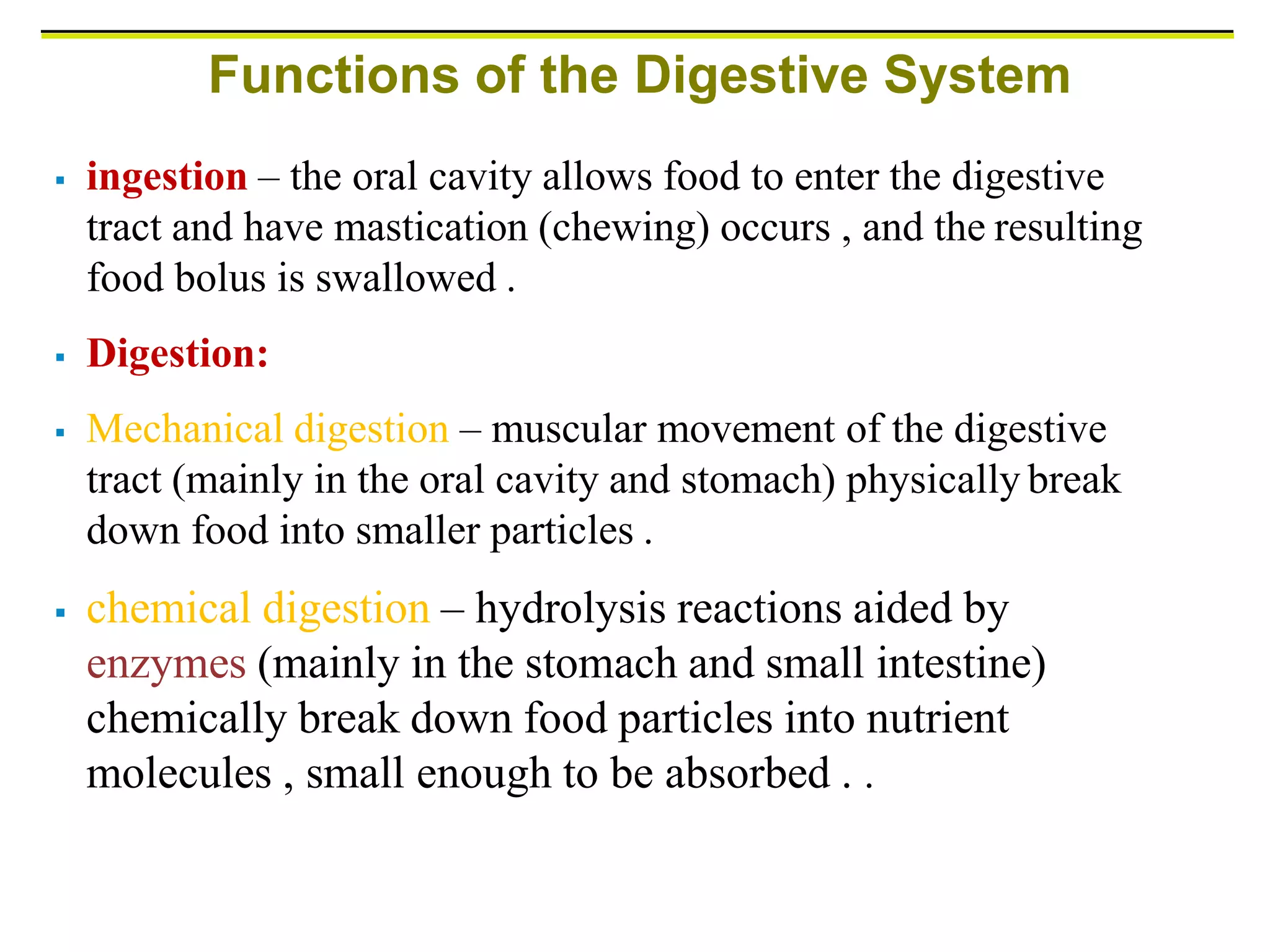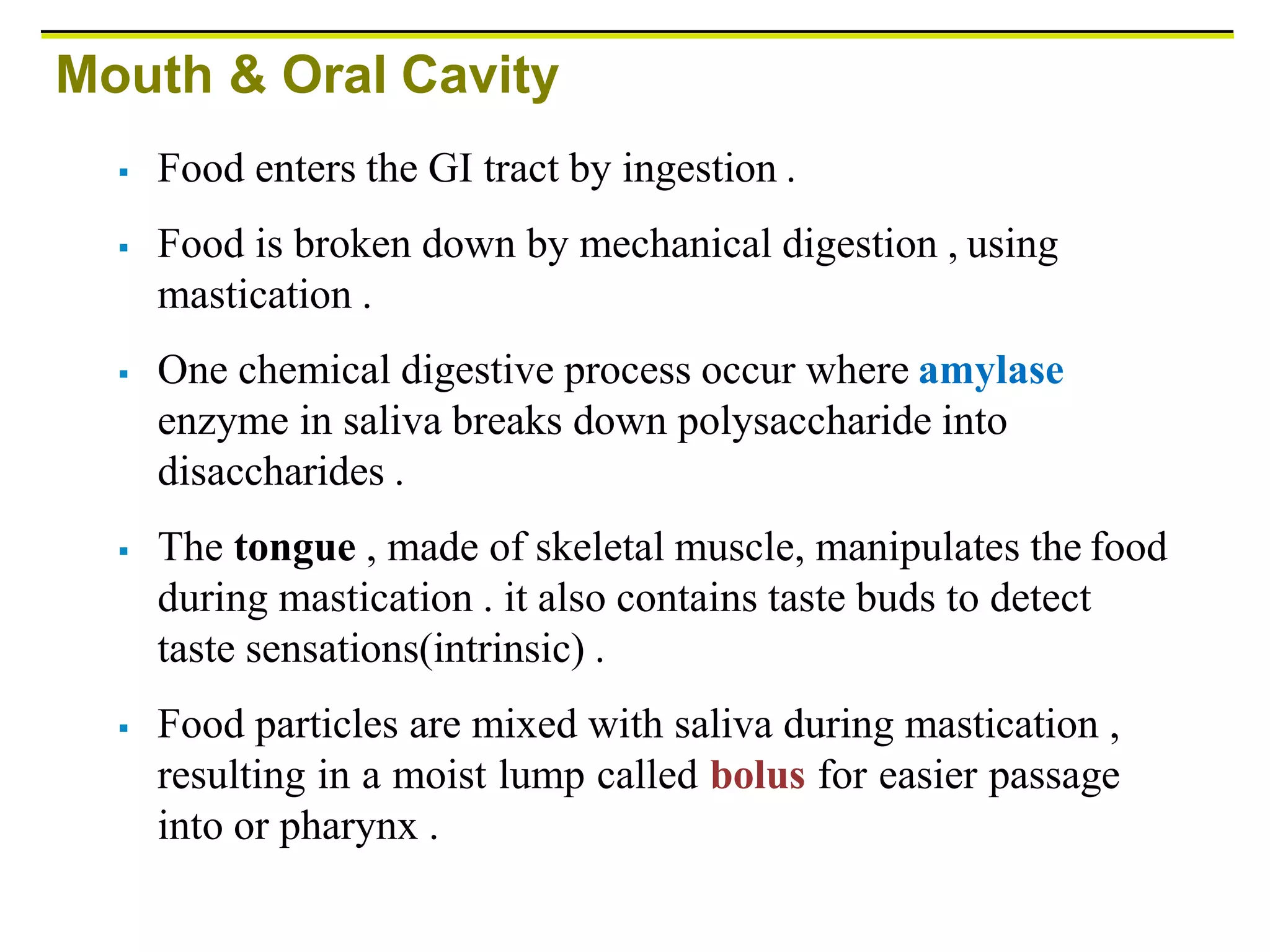The document provides an overview of the digestive system, detailing its main functions including ingestion, digestion, absorption, and elimination, as well as the organization of its organs into the gastrointestinal tract and accessory structures. It outlines the processes of mechanical and chemical digestion, the role of various enzymes and hormones in regulating these activities, and describes the specific functions of the stomach, pancreas, liver, gallbladder, small intestine, and large intestine. Additionally, it notes various clinical terms related to digestive disorders.














































